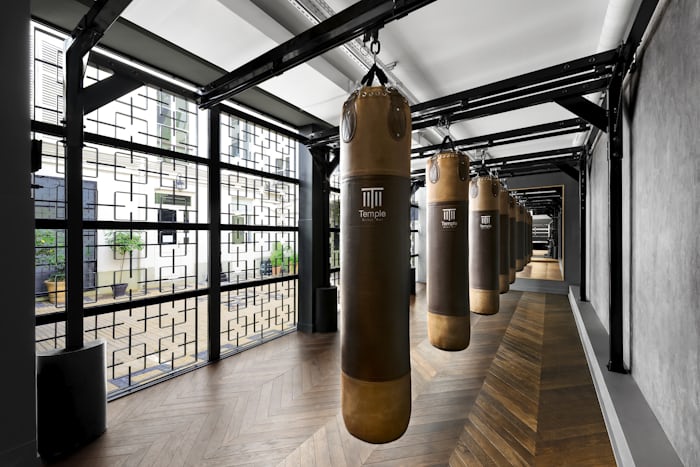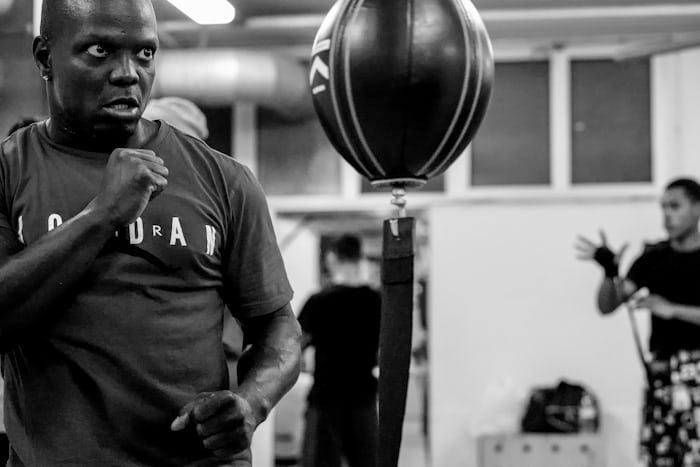Welcome to the ultimate guide to choosing the perfect MMA punching dummy!.
Whether you are a seasoned professional or just starting out in the world of mixed martial arts, having the right equipment is essential to your training and development.
In this comprehensive guide, we will walk you through everything you need to know about selecting the best MMA punching dummy for your needs.
Understanding Your Needs
Before diving into the specifics of different punching dummies.
It’s important to understand your own training needs.
Are you a beginner looking to improve your striking technique?
Or perhaps you are a professional fighter aiming to enhance your speed and power.

Knowing your specific goals and requirements will help you narrow down the options and find the perfect punching dummy for you.
Types of Punching Dummies
There are several types of punching dummies available in the market, each designed for different purposes.
Understanding the differences between these types will help you make an informed decision.
Traditional Heavy Bag
The traditional heavy bag is a classic choice for MMA training.
It is typically cylindrical in shape and filled with dense materials such as sand or fabric.

Heavy bags are great for developing power and strength in your strikes.
They are also versatile and can be used for various types of punches and kicks.
Free-Standing Punching Dummy
A free-standing punching dummy, also known as a “bob” dummy, is designed to simulate a human opponent.
It usually has a torso and head, allowing you to practice more realistic strikes.

This type of dummy is great for working on accuracy and precision in your punches and kicks.
Ground-and-Pound Dummy
For MMA practitioners focusing on ground-and-pound techniques, a specialized ground-and-pound dummy is the perfect choice.

These dummies are designed to be positioned on the ground, allowing you to practice your grappling, striking, and submission techniques from various positions.
Key Considerations
When choosing the right punching dummy for your MMA training, there are several key considerations to keep in mind.
These factors will ensure that you select a dummy that aligns with your training goals and preferences.
Weight and Size
The weight and size of the punching dummy are crucial factors to consider.
Heavier dummies provide more resistance, helping you develop power and strength.
However, lighter dummies may be more suitable for beginners or those focusing on speed and agility.
Material and Durability
Consider the material used in the construction of the punching dummy.
High-quality materials such as synthetic leather or durable fabric ensure longevity and resistance to wear and tear.
Look for dummies that can withstand intense training sessions without losing their shape or functionality.
Adjustability
Some punching dummies offer adjustable features, such as height and position.
These adjustable dummies allow you to customize your training experience and simulate different opponents or striking angles.
If versatility is important to you, opt for a dummy with adjustable components.
Realism and Target Zones
If you are looking to improve your striking accuracy, consider a punching dummy that offers realistic target zones.
This could include anatomically correct positioning of the head, torso, and limbs.
Some dummies even have designated target areas to help you focus your strikes effectively.
Top Picks for MMA Punching Dummies
Now that you have a good understanding of the different types of punching dummies and the key considerations to keep in mind.
Let’s explore some of the top picks in the market.
Century BOB XL
The Century BOB XL is a popular free-standing punching dummy that closely resembles a human opponent.
It features a lifelike torso and head, allowing for realistic striking practice.
The adjustable height makes it suitable for users of all sizes, and the durable construction ensures longevity.
Outslayer MMA Grappling Dummy
For those focusing on ground-and-pound techniques, the Outslayer MMA Grappling Dummy is an excellent choice.

This dummy is designed for intense grappling and striking practice, with reinforced stitching and durable materials to withstand rigorous training sessions.
Ringside 100-pound Muay Thai Heavy Bag
If you prefer a traditional heavy bag for your MMA training, the Ringside 100-pound Muay Thai Heavy Bag is a top contender.
Its long cylindrical design allows for a wide range of striking techniques, and the high-quality construction ensures optimal resistance and durability.
Final Thoughts
Choosing the perfect MMA punching dummy is a decision that should be based on your individual training needs and preferences.
Whether you opt for a traditional heavy bag, a free-standing dummy, or a ground-and-pound dummy, investing in high-quality equipment will undoubtedly elevate your training experience and skill development.
Keep in mind the key considerations discussed in this guide, and select a punching dummy that aligns with your goals and aspirations in the world of mixed martial arts.
Elevating Your Training with Specialized Punching Bags
While traditional punching bags and free-standing dummies are essential tools for MMA training, there are specialized punching bags that can take your practice to the next level.
These unique training aids are designed to target specific skills and enhance your overall performance.
Angle Bag
The angle bag, also known as the teardrop or pear-shaped bag, is a versatile training tool that allows you to practice strikes from different angles.
Unlike the traditional cylindrical heavy bag, the angle bag’s unique shape forces you to adjust your footwork and body positioning, helping you develop better balance, coordination, and striking accuracy.
Angle bags are particularly useful for practicing combination punches, as the shape encourages you to move around the bag and deliver strikes from various angles.
This training can translate directly to your sparring and competitive MMA encounters, where you’ll need to be able to adapt your striking to your opponent’s movement.
Slip Bag
The slip bag, sometimes referred to as the reflex bag, is designed to help you improve your evasive skills and reactive ability.
This bag is suspended from a swivel or spring, allowing it to move in different directions in response to your strikes.
As the bag swings and bounces, you’ll need to time your punches and slips precisely to land clean hits.
Practicing with a slip bag enhances your hand-eye coordination, reflexes, and ability to read your opponent’s movements.
By learning to anticipate and react to the bag’s unpredictable motion, you’ll develop the skills necessary to evade and counter your opponents’ strikes in a real-world MMA setting.
Uppercut Bag
The uppercut bag, as the name suggests, is specifically designed to help you perfect your uppercut technique.

This bag is typically shorter and narrower than a traditional heavy bag, encouraging you to generate power and accuracy from below.
Mastering the uppercut is crucial in MMA, as it can be a devastating weapon when executed properly.
The uppercut bag allows you to focus on the mechanics of this strike, such as hip rotation, elbow positioning, and explosive power generation.
Incorporating the uppercut bag into your training regimen can significantly improve your overall striking arsenal.
Incorporate Variety for a Well-Rounded Training
While specialized punching bags can offer numerous benefits.
It’s essential to incorporate a variety of training tools and techniques into your MMA regimen.
Mixing up your training by utilizing different punching bags, free-standing dummies.
Other MMA-specific equipment can help you develop a more well-rounded skill set.
By alternating between traditional heavy bags, angle bags, slip bags, and uppercut bags.
You’ll challenge your body and mind in different ways, promoting overall improvement in your striking, footwork, and reaction time.
Additionally, introducing various training modalities, such as cardio kickboxing, grappling drills, and sparring sessions, will help you develop a comprehensive MMA skill set.
Optimizing Your Punching Bag Workouts
To get the most out of your punching bag training, it’s crucial to approach your workouts with a strategic mindset.
Here are some tips to help you optimize your punching bag sessions:
Set Clear Goals
Before each training session, define your specific goals.
- Do you want to work on power generation?
- Improve your combination punching?
- Enhance your footwork?
Having a clear objective in mind will help you structure your workout and measure your progress.
Vary Your Techniques
Don’t just rely on the same set of punches and kicks during your bag work. Constantly mix up your techniques.
Incorporating different strikes, combinations, and even defensive movements.
This will help you develop a diverse and adaptable striking arsenal.
Incorporate Intervals
Instead of endlessly pounding the bag, try incorporating interval-based training.
Alternate between periods of intense, explosive striking and periods of active recovery.
This will not only improve your cardiovascular fitness but also help you maintain proper technique and power output throughout the workout.
Focus on Form
While it’s tempting to just let loose and hammer the bag.
It’s essential to maintain proper form and technique throughout your training. Pay attention to your body positioning, hip rotation, and the mechanics of each strike.
Proper form will not only help you avoid injury but also translate to more effective and efficient strikes in sparring and competition.
Measure and Track Progress
Regularly assess your progress by tracking metrics such as power output, strike accuracy, and overall endurance.
This can be done through the use of technology, like punch trackers or speed bags, or by simply observing and recording your performance over time.
Monitoring your progress will help you identify areas for improvement and adjust your training accordingly.
Safety Considerations for Punching Bag Training
While punching bag training is an essential component of MMA preparation.
It’s important to prioritize safety throughout your workouts.
Proper form, equipment maintenance, and injury prevention measures are crucial to ensuring a safe and effective training experience.
Proper Hand Protection
Investing in high-quality hand wraps and gloves is essential for protecting your hands and wrists during punching bag workouts.
Poorly fitted or worn-out hand protection can lead to sprains, fractures, and other serious injuries.
Take the time to ensure your hand gear fits correctly and provides adequate support and cushioning.
Correct Striking Technique
Maintaining proper striking technique is not only important for performance but also for injury prevention.
Ensure that you are striking the bag with the correct knuckles, keeping your wrists straight, and rotating your hips and shoulders to generate power without excessive strain on your joints.
Warm-Up and Cool-Down
Before and after your punching bag workout, take the time to properly warm up and cool down.
This can include dynamic stretching, light cardio, and mobility exercises to prepare your body for the demands of the workout and help minimize the risk of muscle soreness or injury.
Bag Maintenance and Replacement
Regularly inspect your punching bag and its mounting system for any signs of wear or damage.
A well-maintained bag with secure mounting can help prevent accidents and ensure a safe training environment.
Be proactive about replacing the bag or its components when necessary to maintain optimal performance and safety.
Gradual Progression
When introducing new training techniques or increasing the intensity of your punching bag workouts, do so gradually. Sudden increases in volume, force, or duration can lead to overuse injuries.
Build up your training load slowly and listen to your body to avoid pushing yourself beyond your current capabilities.
Conclusion
Mastering the art of punching bag training is a crucial aspect of any MMA practitioner’s development.
By understanding the different types of punching dummies and bags, as well as the key considerations for selecting the right equipment, you can optimize your training and take your skills to new heights.
Incorporating a variety of training tools, such as angle bags, slip bags, and uppercut bags, can help you develop a well-rounded skill set, while also maintaining proper form and safety throughout your workouts.
By setting clear goals, tracking your progress, and prioritizing injury prevention, you can ensure that your punching bag training is both effective and sustainable.
Remember, the key to successful MMA training is a combination of diverse practice, strategic planning, and a commitment to continuous improvement.
By embracing the insights and strategies outlined in this guide, you’ll be well on your way to becoming a more formidable and versatile MMA athlete.





